Browse Primary Sources
Locate primary sources, including images, objects, media, and texts. Annotations by scholars contextualize sources.
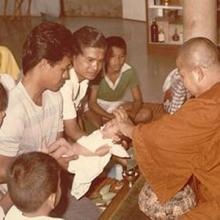
Fire Hair Shaving and Khwan Ceremony, Thailand
The text and photographs above describe a traditional Thai birth ritual that celebrates the child's reaching the milestone of one month old, at which time its survival seems more assured than at birth, and it becomes a full-fledged member of the family. Before the infant is one month old, according to tradition, it may have belonged merely to spirits.
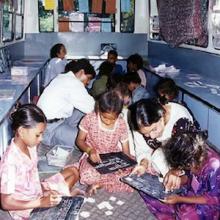
Doorstep School-on-Wheels, Mumbai
The photograph shows the School-on-Wheels, a project of the Doorstep School in Mumbai, or Bombay, India, which has been functioning since 1998. The School-on-Wheels is a converted bus fitted with cabinets filled with stationery supplies, books, toys, and chalkboards, decorated with curtains and children’s art, and staffed by a teacher and roving supervisor.

Loy Krathong Celebration
The young boy in the photograph is placing a krathong, or "leaf cup," into the water to celebrate "Loy Krathong," a festival on the night of the full moon in November, the traditional celebration described in the text as a custom of long standing in Thailand (formerly called Siam).
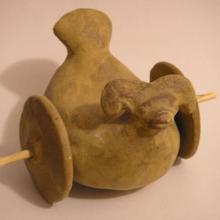
Indus Valley Wheeled Ram Toy
The hand-modeled, terracotta, wheeled figurine of a bird with a ram's head was excavated from an archaeological site in the Indus Valley called Mohenjo-daro, a city that flourished between 2600 and 1900 BCE. Museum curators added the wooden axle attaching the wheels to the body as the original had not been preserved.
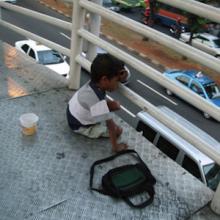
Trafficking Child Beggars in Southeast Asia
The young child in the photograph sits on a walkway in Jakarta, Indonesia, a victim of trafficking for the purpose of begging. Trafficking of women and girls for prostitution has been a well-known phenomenon in Southeast Asia, but trafficking for begging on the streets is a more recent trend.

Sanitarium Weet-Bix Packet
The only such product endorsed by world famous mountaineer and humanitarian, Sir Edmund Hillary, Sanitarium's sugar-free wholegrain wheat biscuit, Weet-Bix, has long been the country's most preferred breakfast cereal. Since 1992, the company has actively sought to promote children's sport, holding Tryathlons (the spelling is deliberate) at 11 centers throughout the country.
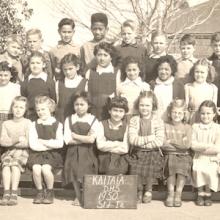
New Zealand School Photographs, 1950 and 1964
Going to school was a universal experience for New Zealand children during the 20th century. Most attended locally if they were not at a boarding school, and the Special and Correspondence Schools served those who were disabled, ill or, living in isolated conditions. By 1910, the numbers of Maori children in public schools outnumbered those enrolled in the country's Native schools.

Isn't she a little young?
This billboard was erected across the American state of Virginia in the summer of 2004 as part of a state health department campaign aimed at reducing statutory rape (the crime of sex with an underage girl). Napkins, stickers, coasters, and matchbooks bearing the same message were distributed to bars and restaurants where young men congregated.

Beatles Petition and Response
In April 1964, the U.S. Labor Department announced new rules for foreign entertainers. Applying through Immigration and Naturalization Service (INS), entertainers with unique talent would be allowed to enter. The Labor Department would evaluate all others to assess availability of American workers.

Children and Daguerreotypes
Daguerreotypes were the first commercially viable photographic process. Developed by French chemist Louis Daguerre in 1839, the technique quickly made its way to the US in the 1840s, the beginning of what some historians characterize as the "golden age" of childhood.
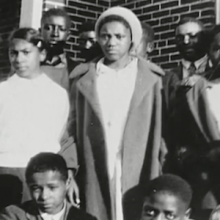
Delaware School Alumni Interviews
In 1954, the Supreme Court declared the "separate but equal" doctrine unconstitutional in Brown vs. the Board of Education of Topeka. Years earlier, however, Pierre S. du Pont, President of E.I. du Pont de Nemours & Co. and General Motors in the 1920s, took bold steps to modernize the education system for African Americans.
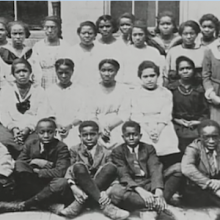
History of Howard High School, Wilmington, Delaware
The only high school for African Americans in Delaware, Howard High School's original small, five-room building, was built shortly after the Civil War. In the early 1870s, Edwina B. Kruse became the first African American principal of the school. She served until 1920, introducing a classical curriculum and cultural activities, and recruiting prominent, talented African Americans as teachers.
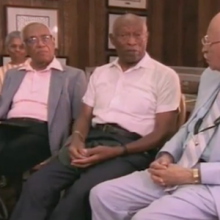
Howard High School Alumni Interviews, Wilmington, Delaware
Howard High School, the only free high school for African Americans in Delaware until the 1950s, was built shortly after the Civil War. In this clip, interviewees describe the obstacles former students faced, such as traveling long distances each day on foot or by milk train. A man and a woman also describe their classes in practical and vocational studies.

Carlisle Indian School Students
The photograph shows buildings and students of the Carlisle Indian Industrial School around 1900. Attended by over 12,000 Native American children from more than 140 tribes between 1879 and 1918, the school was the model for nearly 150 Indian schools. Its founder was U.S.
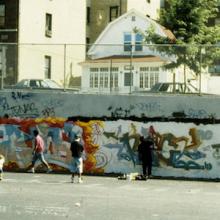
Bronx Schoolyard
From left to right, this photograph shows four graffiti artists at work on a collaborative "production" in a Bronx schoolyard: DEATH, NIC 1, MEX, and NOX. A "production" is a planned, multi-artist work typically unified by a visual theme in the background that is usually painted last, after each artist has finished with their name.
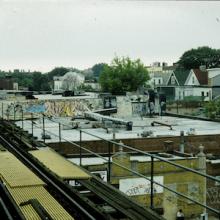
Queens Rooftops, Seen From a Subway Platform
A main goal for almost all graffiti artists is to be seen by other artists or appreciative peers, as well as the typical New York City passers-by. In the mid-1980s, after more than 15 years effort, the New York City Transit Authority was successful in preventing painted trains from circulating through the subway system.

Tags and Throws on a SoHo Side Street
This photo shows a wall covered in "tags" and "throws" along a commonly-traveled side street that runs through the SoHo area of Manhattan, which is one of New York City's major museum and art gallery districts.
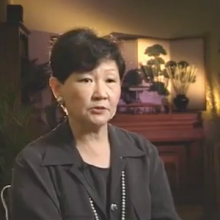
Japanese American Incarceration at Minidoka, Idaho, Interview
May K. Sasaki is a Nisei (2nd generation) Japanese American. She was born Kimiko May Nakamura in 1937 in Seattle. Her parents ran a small grocery store in Nihonmachi (Japantown). She had just turned six years old when Japanese Americans were ordered to leave military zones declared on the West Coast in spring 1942.
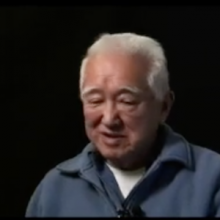
Japanese American Incarceration at Merced Assembly Center, California, Interview
(Yoshimitsu) Bob Fuchigami is a Nisei (second generation) Japanese American, born in 1930 in Marysville, California. His family operated a farm prior to World War II. Following the bombing of Pearl Harbor, he and his family were removed to the Merced Assembly Center, California, and later to the Granada (Amache) incarceration camp, Colorado. He currently resides in Colorado.
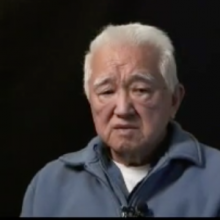
Japanese American Incarceration at Amache, Colorado, Interview
(Yoshimitsu) Bob Fuchigami is a Nisei (2nd generation) Japanese American, born in 1930 in Marysville, California. His family operated a farm prior to World War II. Following the bombing of Pearl Harbor, he and his family were removed to the Merced Assembly Center, California, and later to the Granada (Amache) incarceration camp, Colorado. He currently resides in Colorado.